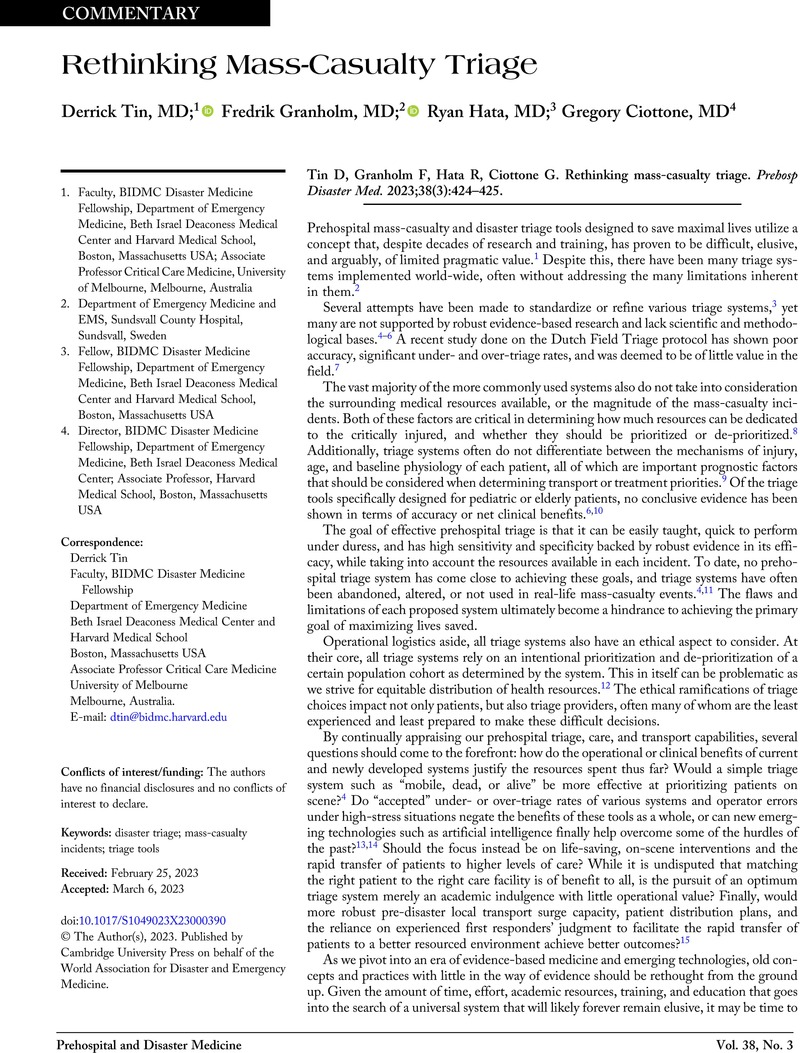Crossref Citations
This article has been cited by the following publications. This list is generated based on data provided by Crossref.
Yilmaz, Sarper
Ozel, Mehmet
Tatliparmak, Ali Cankut
and
Ak, Rohat
2023.
START: The fusion of rapid treatment and triage - A broader perspective for artificial intelligence comparison.
The American Journal of Emergency Medicine,
Khorram-Manesh, Amir
Carlström, Eric
Burkle, Frederick M.
Goniewicz, Krzysztof
Gray, Lesley
Ratnayake, Amila
Faccincani, Roberto
Bagaria, Dinesh
Phattharapornjaroen, Phatthranit
Sultan, Mohammed A. S.
Montán, Carl
Nordling, Johan
Gupta, Shailly
and
Magnusson, Carl
2023.
The implication of a translational triage tool in mass casualty incidents: part three: a multinational study, using validated patient cards.
Scandinavian Journal of Trauma, Resuscitation and Emergency Medicine,
Vol. 31,
Issue. 1,
Yilmaz, Sarper
Tatliparmak, Ali Cankut
Karakayali, Onur
Turk, Mehmet
Uras, Nimet
Ipek, Mustafa
Polat, Dicle
Yazici, Mümin Murat
and
Yilmaz, Serkan
2024.
February 6th, Kahramanmaraş earthquakes and the disaster management algorithm of adult emergency medicine in Turkey: An experience review.
Turkish Journal of Emergency Medicine,
Vol. 24,
Issue. 2,
p.
80.




